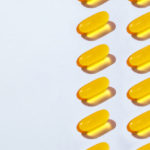About Fertility
What Weeks of Pregnancy is Folic Acid Most Important?

Folic acid is a crucial component of healthy pregnancies and should be taken prior to conception. When a woman has enough folic acid in her body prior to pregnancy, she can significantly reduce the risk of birth defects. What weeks of pregnancy is folic acid most important?
Benefits of Folic Acid During Pregnancy
Folic acid plays a crucial role in the development of the neural tube, which eventually becomes the baby’s brain and spinal cord. Deficiencies in folic acid during pregnancy have been linked to neural tube defects such as spina bifida and anencephaly. By ensuring that you have enough folic acid in your system, you can help reduce the risk of these types of birth defects.
How and When to Take Folic Acid
It is recommended that women take a daily supplement of 400-800 micrograms of folic acid starting at least one month (but ideally two to three months) before conception and throughout the first trimester of pregnancy. Standard prenatal vitamins have a sufficient amount of folic acid. Additionally, many foods, such as breads and cereals, are also fortified with folic acid.
Foods That Are Good Sources of Folic Acid
While folic acid supplements are commonly used to meet the recommended daily intake, it’s also possible to obtain folate from natural food sources.
1. Leafy green vegetables: Spinach, kale, collard greens, and other leafy greens are excellent sources of folic acid. These vegetables are not only rich in folate but also provide other important nutrients.
2. Legumes: Lentils, chickpeas, black beans, pinto beans, and other legumes are high in folate. They are also rich in protein, fiber, and other essential minerals.
3. Citrus fruits: Oranges, grapefruits, lemons, and other citrus fruits contain folic acid. They are also packed with vitamin C, which aids in the absorption of folate.
4. Avocado: Avocado is a nutrient-dense fruit that contains folic acid along with healthy fats and other beneficial compounds.
5. Asparagus: Asparagus is a vegetable that is not only tasty but also a good source of folate. It can be enjoyed in various dishes or as a side vegetable.
6. Broccoli: Broccoli is a cruciferous vegetable that provides a good amount of folic acid, along with other vitamins and minerals.
7. Brussels sprouts: Brussels sprouts are another cruciferous vegetable that contains folic acid. They are also rich in fiber, vitamin C, and vitamin K.
8. Fortified cereals: Many breakfast cereals are fortified with folic acid. Check the labels to find cereals that specifically mention folic acid or folate in their ingredients.
9. Whole grains: Whole grain products like bread, pasta, and rice can contribute to your folic acid intake. Look for whole grain products that are labeled as fortified with folic acid.
10. Liver: If you consume animal products, liver, particularly beef liver, is a significant source of folic acid. However, it’s important to note that liver should be consumed in moderation due to its high vitamin A content.
It’s worth mentioning that folic acid can be sensitive to heat and easily destroyed during cooking. To maximize the folate content in foods, it’s advisable to consume them raw or lightly cooked whenever possible. However, even with cooking, many of these foods still retain a considerable amount of folic acid.
Remember, if you have specific dietary concerns or health conditions, it’s always a good idea to consult with a healthcare professional or a registered dietitian for personalized advice.
Understanding Your Fertility
At Fertility Centers of New England, we encourage all of our patients to lead a healthy lifestyle in order to have the healthiest pregnancy possible. If you have questions about your or your partner’s fertility, please contact us today!


